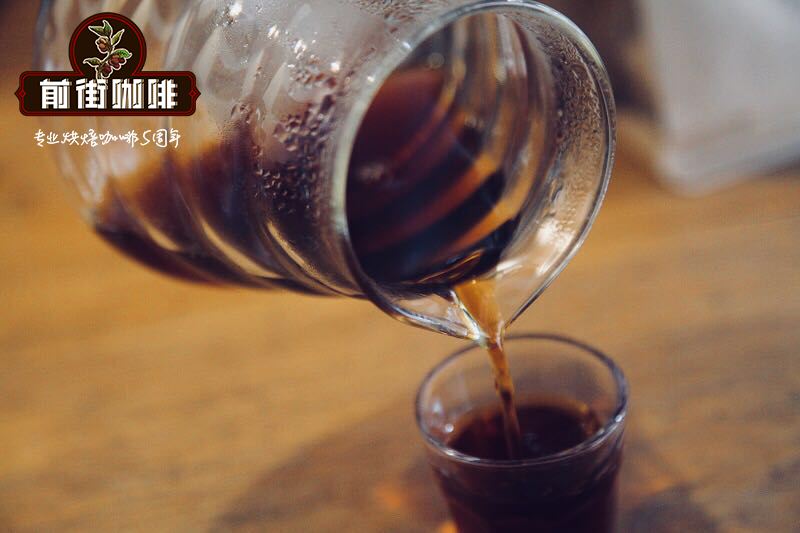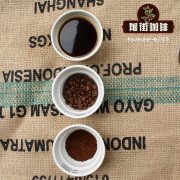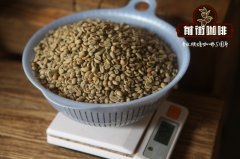Colombian National Coffee introduces Colombian Coffee Flavor

Professional coffee knowledge exchange more coffee bean information please follow the coffee workshop (Wechat official account cafe_style)
Colombia is rich in coffee production, which has always been the second largest coffee producer after Brazil. However, between 2003 and 2007, it was overtaken by Vietnam and is now the third largest coffee producer in the world. And more than 2 million people in Colombia depend on coffee production for a living, accounting for almost 1/4 of the domestic job market. Coffee is a very important cash crop!
The best Colombian beans, similar to Costa Rica or Hawaiian Kona beans, are non-extreme coffee, rich in texture, but not as strong as Sumatra, rich in aroma, but not as good as the best Jamaican alpine flavor; sour, but not as sour as Antigua acid.
Colombian beans often have a sweet taste like caramel, like the fragrance of pudding, carefully smell not too sour, reminiscent of milk pancakes; it is also suitable for blending mixed coffee.
Guatape, Colombia
Colombian boutique coffee has great potential.
In the past, Colombia paid more attention to the commercial coffee bean market, but after 2001, Colombia began to enter the relatively niche boutique coffee market, which is much slower than Brazil and Guatemala in Central and South America. This is mainly because Colombia was not optimistic about the boutique coffee market at that time and did not begin to catch up until 2000!
But even if one step behind others, the Colombian environment is very suitable for the growth of boutique coffee, not only rich landforms, but also low latitude, high altitude, compared with Brazil, in boutique coffee has a great explosive power!
Columbia low latitude: located between three and eight degrees, belonging to the low-latitude coffee belt, can be harvested twice a year.
High altitude in Colombia: coffee is mostly grown between 1200 and 1900 meters above sea level
Colombian coffee producing area
Coffee producing areas in Colombia are divided into commercial beans and boutique beans.
Commercial coffee beans are concentrated in central and northern Colombia, mostly large-scale entrepreneurial coffee farmers. Among them, the three well-known producing areas of "MAM" are Medell í n, Armenia and Manizales. The main flavor is the well-known Central American flavor with a strong sense of fruit acid. But Bucaramanga, produced in the northeastern province of Santander, is known for its low acidity and bitterness, similar to Indonesia's Mantenin. (this phenomenon may be due to the decrease in acidity in Kansai at a lower altitude.)
The producing area of boutique coffee beans is mainly in the south, Haida is more than 1500 meters, and there are many volcanoes, creating many well-known boutique producing areas, including Cauca, Huila, Meta, Tolima, Nari ñ o, etc., the main flavor is caramel aroma, with delicate berry aroma and sour aroma, and the sweet taste is obvious!
Colombian coffee tree
Coffee bean size is important, but it doesn't represent flavor.
Colombian coffee focuses on size rather than flavor, so if you see the top "Supremo", don't regard it as a representative of good taste. It just means that 80% of the coffee bean size is more than 17 items, which has nothing to do with the flavor, so you must pay special attention to which producing area, the southern boutique producing areas will mark the provinces and place names, if there is no famous. Those are mostly commercial coffee beans!
Coffee beans with a size of more than 17 mesh are collectively referred to as "Supremo" (top), and coffee beans under 17 mesh are collectively referred to as "Excelso" (excellent).
END
Important Notice :
前街咖啡 FrontStreet Coffee has moved to new addredd:
FrontStreet Coffee Address: 315,Donghua East Road,GuangZhou
Tel:020 38364473
- Prev

What is fermentation? Dry fermentation and its flavor wet fermentation and its flavor difference
What is fermentation? In short, fermentation is the process by which sugar and starch break down into acids or alcohol. Yeast and bacteria play an important role in this process. Sasa tells us that this yeast is called Saccharomyces cerevisiae. It is a microorganism and a natural wild yeast found in grapes, cocoa beans and other fruits. It is also present in brewing, cocoa bean processing and
- Next

The relationship between the growth altitude of coffee and the flavor of coffee
Professional coffee knowledge exchange more coffee bean information Please pay attention to the relationship between coffee growth altitude and coffee flavor in coffee workshop (Wechat official account cafe_style) Coffee raw beans are generally graded according to raw bean size, defect rate and altitude. The size and defect rate of raw beans are easy to understand, and many people do not quite understand why some producing areas should be graded according to the altitude at which coffee beans grow.
Related
- Beginners will see the "Coffee pull flower" guide!
- What is the difference between ice blog purified milk and ordinary milk coffee?
- Why is the Philippines the largest producer of crops in Liberia?
- For coffee extraction, should the fine powder be retained?
- How does extracted espresso fill pressed powder? How much strength does it take to press the powder?
- How to make jasmine cold extract coffee? Is the jasmine + latte good?
- Will this little toy really make the coffee taste better? How does Lily Drip affect coffee extraction?
- Will the action of slapping the filter cup also affect coffee extraction?
- What's the difference between powder-to-water ratio and powder-to-liquid ratio?
- What is the Ethiopian local species? What does it have to do with Heirloom native species?

